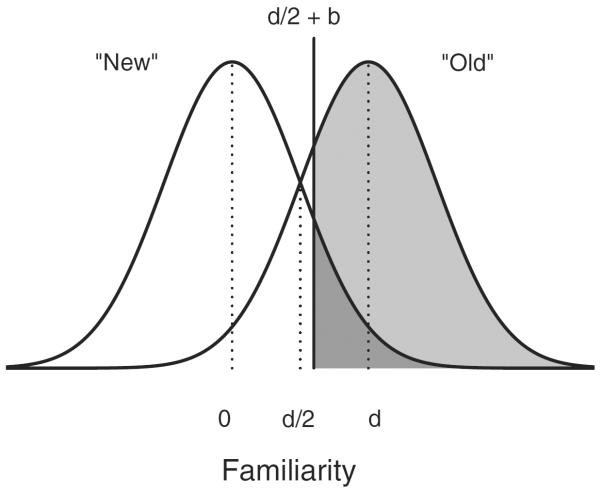Fig. 2.
The classic equal-variance model of signal detection theory. Representations for targets and distractors are represented as equal-variance Gaussian distributions, separated by a distance d, known as the discriminability parameter. A criterion, shown as the vertical dashed line, is used to determine the response. Deviation from the optimal criterion placement at d/2 is a bias, and is measured by the parameter b.

